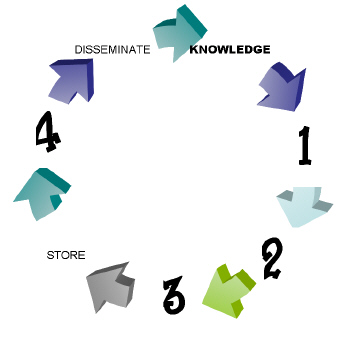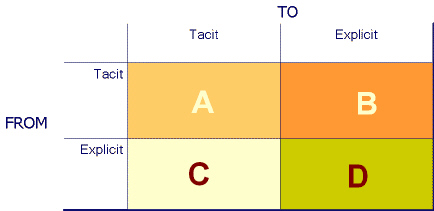Multiple Choice
Identify the
choice that best completes the statement or answers the question.
|
|
|
1.
|
Which of the following would not normally be regarded as an intangible
transferable resource?
a. |
Company's name and logo |
c. |
Trademarks |
b. |
A franchise |
d. | Internet
domains |
|
|
|
2.
|
Which of the following statements is most true?
a. | The literature points to five primary knowledge integration
mechanisms | b. | Routines are more efficient primary integration mechanisms for organizations
operating within dynamic environments | c. | Direction seeks to embody knowledge in informal
routines | d. | A characteristic of tacit knowledge is that “we can tell what we know
” (Polanyi 1966) |
|
|
|
3.
|
Which of the following statements is not true?
a. | Replication involves transferring or redeploying competencies from one concrete
economic setting to another | b. | Replication cannot be used to support
geographic and product line expansion | c. | Imitation is simply replication performed by a
competitor | d. | In competitive markets, the ease of imitation that determines the sustainability of
competitive advantage. |
|
|
|
4.
|
Which of the following statements are least true?
a. | Organizations do not learn through trial-and-error | b. | Organizations may
learn through benchmarking | c. | Competitors and suppliers are one mechanism
through which the organization can learn | d. | Organizations may learn through copying
others |
|
|
|
5.
|
Garvin (1993:80)suggests learning organizations are skilled at five main
activities. Which item is not one of those activities?
a. |
Learning from their own experience |
d. |
Experimentation
|
b. |
Learning from best practices |
e. |
Systematic decision making |
c. |
Systematic problem
solving |
f. |
Systematic problem
solving |
|
|
|
6.
|
Identify the activity referred to in the knowledge-management cycle figure by
the number 2  a. | Manage | c. | Refine | b. | Capture | d. | Create |
|
|
|
7.
|
Identify the activity referred to in the knowledge-management cycle figure by
the number 1  a. | Manage | c. | Refine | b. | Capture | d. | Create |
|
|
|
8.
|
Which of the following statements is least true?
a. | Innovation, is the creation of new knowledge | b. |
Collaboration is
an examples of an acquisition-oriented knowledge management processes |
c. | Acquisition-oriented
knowledge management processes are directed at obtaining knowledge | d. | Collaboration
between individuals brings together individual differences which prevent the creation of
knowledge |
|
|
|
9.
|
Which of the following is not a “modes” of knowledge conversion (as
discussed by Nonaka (1994))
a. |
Socialization |
d. |
Externalization |
b. |
Internalization |
e. |
Combination |
c. |
Adaptation |
|
|
|
10.
|
What mode/ type of knowledge transfer may be used to describe a situation were
by a parent teaches one of their children to ride a bicycle?
a. |
Socialization |
d. |
Internalization |
b. |
Externalization |
e. |
Adaptation |
c. |
Combination |
|
|
|
11.
|
What mode/ type of knowledge transfer may be used to describe a situation were
of someone is learning by doing?
a. |
Socialization |
d. |
Internalization |
b. |
Externalization |
e. |
Adaptation |
c. |
Combination |
|
|
|
12.
|
Which of the following is of least importance when considering factors impacting
upon knowledge sharing within organizations
a. | Leadership | c. | Culture | b. |
Support structures |
d. | Policy |
|
|
|
13.
|
Consider the R&D function and the debate to centralise or decentralise it -
Identify the least true statement
a. | Centralised R&D will be more typical in the global form
company | b. | Decentralised R&D supports a cost based competitive advantage | c. | Evidence suggests
that whilst most research is carried out at headquarters, there is a trend to carry out R&D
abroad | d. | Decentralisation avoids having to adapt centrally-developed-innovations to local
markets |
|
|
|
14.
|
Which of he following statements is least true?
a. |
Codification is also known as the person-to-document approach |
b. |
The codification
approach enables recipients to access knowledge without having to contact the person who originally
developed it |
c. |
Personalisation strategies are not reliant on databases or technology but are based
on face-to-face contact |
d. |
Codification is a technology enabled
strategy |
|
|
|
15.
|
 Consider the Four Modes of Knowledge Conversion -
which mode is represented by the letter “A” in the diagram shown above? a. | Socialisation | c. | Internalisation | b. | Combination | d. | Externalisation |
|